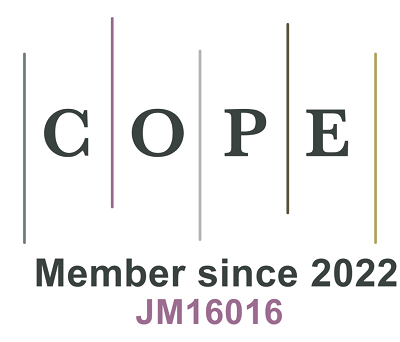REFERENCES
1. Ayoub SS. Paracetamol (acetaminophen): a familiar drug with an unexplained mechanism of action. Temperature 2021;8:351-71.
2. Ghanem CI, Pérez MJ, Manautou JE, Mottino AD. Acetaminophen from liver to brain: New insights into drug pharmacological action and toxicity. Pharmacol Res 2016;109:119-31.
3. Esh CJ, Chrismas BCR, Mauger AR, Taylor L. Pharmacological hypotheses: is acetaminophen selective in its cyclooxygenase inhibition? Pharmacol Res Perspe 2021;9:e00835.
4. Flower RJ, Vane JR. Inhibition of prostaglandin synthetase in brain explains the anti-pyretic activity of paracetamol (4-acetamidophenol). Nature 1972;240:410-1.
5. Saliba SW, Marcotegui AR, Fortwängler E, et al. AM404, paracetamol metabolite, prevents prostaglandin synthesis in activated microglia by inhibiting COX activity. J Neuroinflamm 2017;14:246.
6. Bookout AL, de Groot MH, Owen BM, et al. FGF21 regulates metabolism and circadian behavior by acting on the nervous system. Nat Med 2013;19:1147-52.
7. Yoon E, Babar A, Choudhary M, Kutner M, Pyrsopoulos N. Acetaminophen-induced hepatotoxicity: a comprehensive update. J Clin Transl Hepatol 2016;4:131-42.
8. Blieden M, Paramore LC, Shah D, Ben-Joseph R. A perspective on the epidemiology of acetaminophen exposure and toxicity in the United States. Expert Rev Clin Pharmacol 2014;7:341-8.
9. Lancaster EM, Hiatt JR, Zarrinpar A. Acetaminophen hepatotoxicity: an updated review. Arch Toxicol 2015;89:193-9.
11. Fisher ES, Curry SC. Chapter Ten-Evaluation and treatment of acetaminophen toxicity. Adv Pharmacol 2019;85:263-72.
13. Chun LJ, Tong MJ, Busuttil RW, Hiatt JR. Acetaminophen hepatotoxicity and acute liver failure. J Clin Gastroenterol 2009;43:342-9.
14. Agrawal S, Khazaeni B. Acetaminophen toxicity. Treasure Island (FL): StatPearls Publishing; 2023.
15. Jaeschke H, McGill MR. Cytochrome P450-derived versus mitochondrial oxidant stress in acetaminophen hepatotoxicity. Toxicol Lett 2015;235:216-7.
16. Raffa RB, Pergolizzi JV Jr, Taylor R Jr, Decker JF, Patrick JT. Acetaminophen (paracetamol) oral absorption and clinical influences. Pain Pract 2014;14:668-77.
17. Schäfer C, Schröder KR, Höglinger O, Tollabimazraehno S, Lornejad-Schäfer MR. Acetaminophen changes intestinal epithelial cell membrane properties, subsequently affecting absorption processes. Cell Physiol Biochem 2013;32:431-47.
18. Southren DL, Nardone AD, Haastrup AA, Roberts RJ, Chang MG, Bittner EA. An examination of gastrointestinal absorption using the acetaminophen absorption test in critically ill patients with COVID-19: a retrospective cohort study. Nutr Clin Pract 2021;36:853-62.
19. Marin TM, de Carvalho Indolfo N, Rocco SA, et al. Acetaminophen absorption and metabolism in an intestine/liver microphysiological system. Chem Biol Interact 2019;299:59-76.
20. Zillen D, Movig KLL, Kant G, Masselink JB, Mian P. Impact of malnourishment on the pharmacokinetics of acetaminophen and susceptibility to acetaminophen hepatotoxicity. Clin Case Rep 2021;9:e04611.
21. Ouzzine M, Gulberti S, Ramalanjaona N, Magdalou J, Fournel-Gigleux S. The UDP-glucuronosyltransferases of the blood-brain barrier: their role in drug metabolism and detoxication. Front Cell Neurosci 2014;8:349.
22. Mazaleuskaya LL, Sangkuhl K, Thorn CF, FitzGerald GA, Altman RB, Klein TE. PharmGKB summary: pathways of acetaminophen metabolism at the therapeutic versus toxic doses. Pharmacogenet Genom 2015;25:416-26.
23. Zhao P, Slattery JT. Effects of ethanol dose and ethanol withdrawal on rat liver mitochondrial glutathione: implication of potentiated acetaminophen toxicity in alcoholics. Drug Metab Dispos 2002;30:1413-7.
24. Zaher H, Buters JT, Ward JM, et al. Protection against acetaminophen toxicity in CYP1A2 and CYP2E1 double-null mice. Toxicol Appl Pharmacol 1998;152:193-9.
25. Ben-Shachar R, Chen Y, Luo S, Hartman C, Reed M, Nijhout HF. The biochemistry of acetaminophen hepatotoxicity and rescue: a mathematical model. Theor Biol Med Model 2012;9:55.
26. Mitchell JR, Jollow DJ, Potter WZ, Gillette JR, Brodie BB. Acetaminophen-induced hepatic necrosis. IV. Protective role of glutathione. J Pharmacol Exp Ther 1973;187:211-7.
27. Leeming MG, Gamon LF, Wille U, Donald WA, O'Hair RA. What are the potential sites of protein arylation by N-Acetyl-p-benzoquinone imine (NAPQI)? Chem Res Toxicol 2015;28:2224-33.
28. Du K, Ramachandran A, Jaeschke H. Oxidative stress during acetaminophen hepatotoxicity: sources, pathophysiological role and therapeutic potential. Redox Biol 2016;10:148-56.
29. Licata A, Minissale MG, Stankevičiūtė S, et al. N-Acetylcysteine for preventing acetaminophen-induced liver injury: a comprehensive review. Front Pharmacol 2022;13:828565.
30. Corcoran GB, Wong BK. Role of glutathione in prevention of acetaminophen-induced hepatotoxicity by N-acetyl-L-cysteine in vivo: studies with N-acetyl-D-cysteine in mice. J Pharmacol Exp Ther 1986;238:54-61.
31. Lauterburg BH, Corcoran GB, Mitchell JR. Mechanism of action of N-acetylcysteine in the protection against the hepatotoxicity of acetaminophen in rats in vivo. J Clin Invest 1983;71:980-91.
32. Tobwala S, Khayyat A, Fan W, Ercal N. Comparative evaluation of N-acetylcysteine and N-acetylcysteineamide in acetaminophen-induced hepatotoxicity in human hepatoma HepaRG cells. Exp Biol Med 2015;240:261-72.
33. Saito C, Zwingmann C, Jaeschke H. Novel mechanisms of protection against acetaminophen hepatotoxicity in mice by glutathione and N-acetylcysteine. Hepatology 2010;51:246-54.
36. Kerr F, Dawson A, Whyte IM, et al. The australasian clinical toxicology investigators collaboration randomized trial of different loading infusion rates of N-acetylcysteine. Ann Emerg Med 2005;45:402-8.
37. Yang R, Miki K, He X, Killeen ME, Fink MP. Prolonged treatment with N-acetylcystine delays liver recovery from acetaminophen hepatotoxicity. Crit Care 2009;13:R55.
38. Pakravan N, Waring WS, Sharma S, Ludlam C, Megson I, Bateman DN. Risk factors and mechanisms of anaphylactoid reactions to acetylcysteine in acetaminophen overdose. Clin Toxicol 2008;46:697-702.
39. Dear JW. Fomepizole should not be used more liberally in paracetamol overdose. Br J Clin Pharmacol 2023;89:599-601.
40. Link SL, Rampon G, Osmon S, Scalzo AJ, Rumack BH. Fomepizole as an adjunct in acetylcysteine treated acetaminophen overdose patients: a case series. Clin Toxicol 2022;60:472-7.
41. Morrison EE, Oatey K, Gallagher B, et al. POP Trial Investigators. Principal results of a randomised open label exploratory, safety and tolerability study with calmangafodipir in patients treated with a 12 h regimen of N-acetylcysteine for paracetamol overdose (POP trial). EBioMedicine 2019;46:423-30.
42. Chen Z, Jiang Y, Zhang X, et al. ResNet18DNN: prediction approach of drug-induced liver injury by deep neural network with ResNet18. Brief Bioinform 2022;23:bbab503.
43. Ghosh A, Berger I, Remien CH, Mubayi A. The role of alcohol consumption on acetaminophen induced liver injury: Implications from a mathematical model. J Theor Biol 2021;519:110559.
45. Riordan SM, Williams R. Alcohol exposure and paracetamol-induced hepatotoxicity. Addict Biol 2002;7:191-206.
46. Tsuchiya Y, Sakai H, Hirata A, Yanai T. Effects of food restriction on the expression of genes related to acetaminophen-induced liver toxicity in rats. J Toxicol Pathol 2018;31:267-74.
47. Lee SS, Buters JT, Pineau T, Fernandez-Salguero P, Gonzalez FJ. Role of CYP2E1 in the hepatotoxicity of acetaminophen. J Biol Chem 1996;271:12063-7.
48. O'Shea D, Davis SN, Kim RB, Wilkinson GR. Effect of fasting and obesity in humans on the 6-hydroxylation of chlorzoxazone: a putative probe of CYP2E1 activity. Clin Pharmacol Ther 1994;56:359-67.
49. Villeneuve JP, Raymond G, Bruneau J, Colpron L, Pomier-Layrargues G. Pharmacokinetics and metabolism of acetaminophen in normal, alcoholic and cirrhotic subjects. Gastroenterol Clin Biol 1983;7:898-902.
50. Vos MB, Kimmons JE, Gillespie C, Welsh J, Blanck HM. Dietary fructose consumption among US children and adults: the Third National Health and Nutrition Examination Survey. Medscape J Med 2008;10:160. [PMID:18769702 PMCID:PMC2525476].
51. Ishida K, Hanada T, Sakai T, Doi K. Effects of fructose-induced hypertriglyceridemia on hepatorenal toxicity of acetaminophen in rats. Exp Toxicol Pathol 1995;47:509-16.
52. Cho S, Tripathi A, Chlipala G, et al. Fructose diet alleviates acetaminophen-induced hepatotoxicity in mice. PLoS One 2017;12:e0182977.
53. Zhang D, Wang S, Ospina E, et al. Fructose protects against acetaminophen-induced hepatotoxicity mainly by activating the carbohydrate-response element-binding protein α-fibroblast growth factor 21 axis in mice. Hepatol Commun 2021;5:992-1008.
54. Ye D, Wang Y, Li H, et al. Fibroblast growth factor 21 protects against acetaminophen-induced hepatotoxicity by potentiating peroxisome proliferator-activated receptor coactivator protein-1α-mediated antioxidant capacity in mice. Hepatology 2014;60:977-89.
55. Lin X, Liu YB, Hu H. Metabolic role of fibroblast growth factor 21 in liver, adipose and nervous system tissues. Biomed Rep 2017;6:495-502.
56. Ma L, Tsatsos NG, Towle HC. Direct role of ChREBP.Mlx in regulating hepatic glucose-responsive genes. J Biol Chem 2005;280:12019-27.
57. Ortega-Prieto P, Postic C. Carbohydrate sensing through the transcription factor ChREBP. Front Genet 2019;10:472.
58. Dushay JR, Toschi E, Mitten EK, Fisher FM, Herman MA, Maratos-Flier E. Fructose ingestion acutely stimulates circulating FGF21 levels in humans. Mol Metab 2015;4:51-7.
59. Lee HJ, Cha JY. Recent insights into the role of ChREBP in intestinal fructose absorption and metabolism. BMB Rep 2018;51:429-36.
60. Zhang D, Tong X, VanDommelen K, et al. Lipogenic transcription factor ChREBP mediates fructose-induced metabolic adaptations to prevent hepatotoxicity. J Clin Invest 2017;127:2855-67.
61. Minard AY, Tan SX, Yang P, et al. mTORC1 is a major regulatory node in the FGF21 signaling network in adipocytes. Cell Rep 2016;17:29-36.
62. Lu Q, Zhou Y, Hao M, et al. The mTOR promotes oxidative stress-induced apoptosis of mesangial cells in diabetic nephropathy. Mol Cell Endocrinol 2018;473:31-43.
63. Woo Y, Lee HJ, Jung YM, Jung YJ. mTOR-mediated antioxidant activation in solid tumor radioresistance. J Oncol 2019;2019:5956867.
64. Kwon D, Kim SM, Correia MA. Cytochrome P450 endoplasmic reticulum-associated degradation (ERAD): therapeutic and pathophysiological implications. Acta Pharm Sin B 2020;10:42-60.









